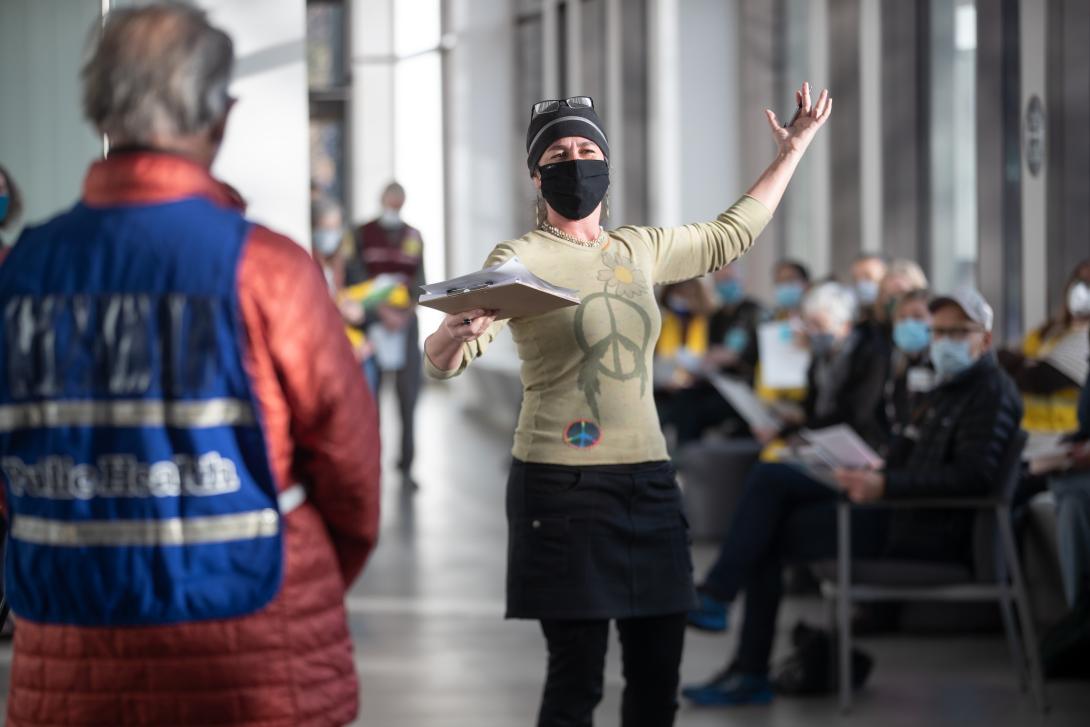
Oregon officials marked a million-person milestone Wednesday in their COVID-19 vaccine rollout, a largely symbolic point in the public health drive that still faces a bumpy road as it accelerates.
The figure represents the number of Oregonians who have received one or both required doses of the COVID-19 vaccine. But the big number does not mean the state’s rollout is glitch-free. Officials on Wednesday apologized because the authority’s partners at All4Oregon, a vaccination consortium of hospitals, erroneously sent out invitations for vaccine appointments at the Oregon Convention Center to about 11,000 people who aren’t eligible until April 19. Those invitations were based on faulty contact information the Oregon Health Authority’s Get Vaccinated Oregon team provided All4Oregon.
“We sincerely apologize for our mistake and the confusion it has caused,” the authority said in a news release. All4Oregon’s members, Portland-area hospitals, will honor the appointments offered in error, the authority said.
With about one million Oregoninans having received one or two shots, that leaves about 2.6 million people to go. The state has a population of 4.2 million, but about 600,000 of those residents are under 16. There is no vaccine approved yet for children under 16.
The state has continued to focus on vaccinating senior citizens this month, after Oregon put them behind K-12 public school teachers because state officials wanted to open schools sooner. So far, more than 62% of Oregonians age 65 and older have been vaccinated.
The state expects to have vaccinated about 70% of Oregonians age 65 and older by March 29, when new groups become eligible statewide, including agricultural, seafood and food processor employees and adults age 45 to 64 with underlying chronic health conditions like asthma and heart disease. That new eligibility group also includes adults who live in congregate facilities and the homeless.
On April 19, many other frontline workers, multi-generational households and people 16-44 with underlying health conditions will become eligible.
“We continue to ensure that our vaccinations proportionately reflect the faces of our communities,” Oregon Health Authority Director Patrick Allen said in a statement. “We have an ongoing responsibility for equitable vaccine distribution and know that our efforts should and will be a model for how we’re working to eliminate health disparities in Oregon.”
Allen told the House COVID-19 Subcommittee that officials will get more Johnson & Johnson vaccine doses next week, but not as many as officials had hoped to receive. He did not provide a specific number. The state gets most of its vaccine from two other manufacturers, Pfizer and Moderna. The Johnson & Johnson vaccine, unlike the other two, is newer but only requires one dose instead of two, making it more efficient to administer.
Allen said that if the Johnson & Johnson supplies continue to be available at a lower rate, that will hamper the rollout. The health authority didn’t have estimates available late Wednesday of the expected doses and the decreased amount.
The health authority is letting counties accelerate their vaccination expansions if they are struggling to fill appointment slots with senior citizens and have ample vaccine supplies.
Twenty-one of Oregon’s 36 counties have submitted attestation letters saying they have enough vaccine to speed up their expansions. All of them are outside the Portland metropolitan tri-county area. The counties are: Baker, Benton, Deschutes, Douglas, Grant, Harney, Jefferson, Josephine, Klamath, Lake, Lane, Lincoln, Linn, Malheur, Marion, Morrow, Polk, Sherman, Umatilla, Union and Yamhill.
The health authority allocates doses to providers but doesn’t directly put shots into arms. That task is for 1,245 providers enrolled to receive and administer vaccines. Not every provider in that group has started to receive and administer the doses yet, a sign that the state can still ramp up as more supplies come in.
You can reach Ben Botkin at b[email protected] or via Twitter @BenBotkin1.
